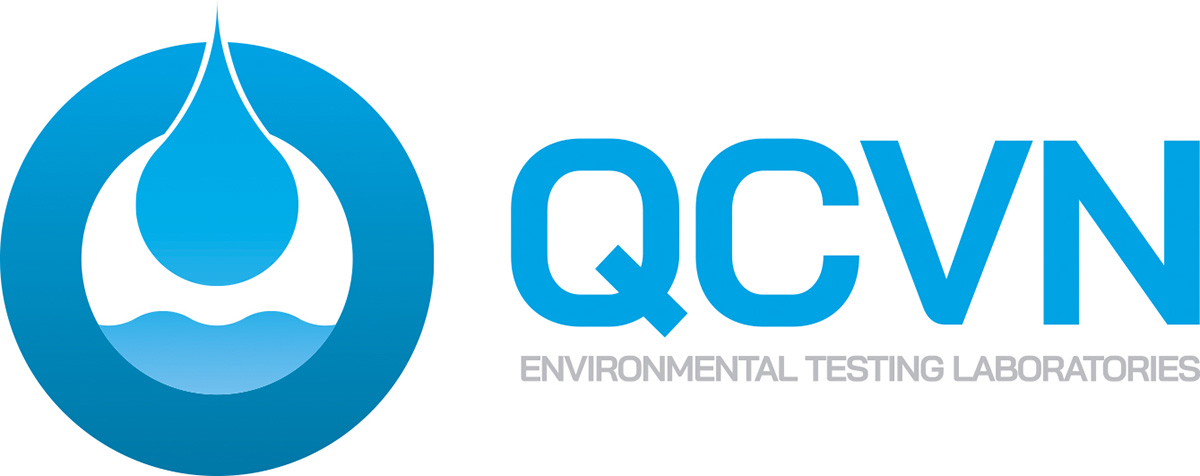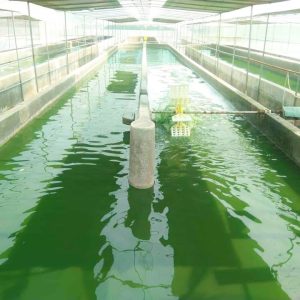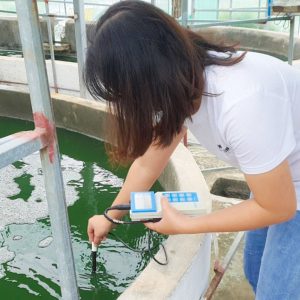Providing spirulina-like algae
Providing spirulina varieties to customers for trial planting, industrial scale farming or algae farming technology transfer
0 VND-0%0 VND
Providing spirulina-like algae
Providing F0/F1/F2 algae seeds and transferring technology to customers
Process of cultivating biomass algae:
- Preparation materials:
- 50l glass tank
- Aeration machines
- Mineral salt/Zarouk
- Algae has biomass
- Net to catch algae
- Methods of farming
- Mix 1/3 of a bag of mineral salt with 50l of clean water (If using tap water, let it settle overnight and aerate continuously to remove chlorine in the water; if using well water, you need to go through a filtration system to remove it. indicators of metals or impurities in water)
- Add algae seeds and mixed nutrients and aerate continuously 24/7, taking care to keep the algae tank in a place away from dust and rainwater.
- Regularly monitor the pH of water from 8-10.5 to supplement nutrients
- After 15 days, harvest the algae with a net and continue to add nutrients to feed a new batch
Issues in raising and processing Spirulina algae
-
Algae farming systems
In the world, there are currently two main algae farming systems: open system farming (Opened Ecosystem-O.E.S) and closed system farming (Closed Ecosystem-C.E.S). Open system Spirulina farming technology (O.E.S): often applied on large-scale farms (industrial) or family-scale farming (manual).
Spirulina is grown in a nutritious environment in jars, pots, tanks, and multi-channel pond systems. In this model, algae directly use light from the sun. Large-scale farms are often installed with a stirring fan system to ensure that the algae absorb light well and avoid the algae fibers from sinking to the bottom.
Small-scale farming models often stir by hand and have a small area. Because this is an open farming system, this type of farming depends greatly on weather conditions, so good management solutions are needed. Technology for cultivating Spirulina in a closed system (C.E.S): Spirulina is grown in tanks placed in greenhouses (green-house). This is a farming model that requires large investments and has the ability to control physical and chemical factors. Algae use artificial or natural light from the sun.
-
Some issues when preparing to grow algae:
- Research and survey the consumer market.
- The transportation system from the algae farming area to the algae processing factories must be convenient. Find an agreement between algae farmers and algae processors.
- Prepare materials to build ponds, tanks, and water stirring systems.
- Prepare a good source of Spirulina algae.
- Prepare algae farming chemicals, equipment to measure parameters of the algae farming environment such as: pH meter, oxygen meter, temperature,…
- Prepare well for algae farming techniques.
- Select a location for algae farming
- The place where algae are raised must have the appropriate amount of lighting to help algae grow normally and reduce lighting costs
- Actively use water sources to grow algae, water is not polluted
- Convenient transportation for transporting input materials and post-harvest products.
- A place with a good grid system
-
Designing algae tanks
- Algae tanks are usually rectangular with rounded corners combined with a paddle-wheel system or can be stirred manually (small scale). The effects of the stirring paddles are to: create better contact of algae cells with nutrients, light, and CO2; Keeping the water temperature stable helps algae grow well; Creating a flow helps keep algae from settling, especially in the corners of the tank.
- The tank can be large (or small) in area. The volume can be up to 1 hectare x 0.3 m3, even up to 200 ha x 0.3 m3. The tank should be built 50-55 cm high to ensure a water depth of 20-30 cm. The tank is built with common construction materials such as: cement, plastic, cement bricks or alkali-resistant cement concrete bricks.
- The tank has a wall built in the middle to create water circulation when stirred. One or two agitators can be placed at the ends to circulate the water.
- In addition, a roof can be built for the tank. The roof is a simple type of greenhouse that can be designed with two roofs and a pointed roof. The roof frame is made of steel, clear corrugated iron, plastic or glass to allow light to pass through. Movable roof in the direction of one half of the roof that can be pulled parallel to the adjacent fixed roof. The canopy is located in the best lighting position, usually facing East-West. The function of the roof is to prevent contamination of dust, dirt and sand carried by the wind.
-
Water source used to grow Spirulina algae
Water is an important solvent to dissolve nutrients that feed Spirulina. You can use many different water sources to grow Spirulina algae such as drilled well water (contains many useful inorganic substances, but need to remove toxins such as lead, arsenic, etc.), urban tap water (contains many minerals). good but expensive), sea water, mineral springs (contains many good nutrients for algae growth). Depending on different conditions, choose an appropriate water source for algae farming.

-
Spirulina varieties and standards
In our country, we often use imported Spirulina platensis algae, with four main shapes: straight, springy, wavy and thick, deep. Imported Spirulina varieties are often of African origin and have gone through the isolation process in biological laboratories. Spirulina gene sources in our country are quite rich, especially Spirulina grows naturally in Ba Be Lake (Hanoi) (Le Van Lang, 1999).
Depending on different purposes, there are appropriate breed selection criteria. Fox (1996) issues to keep in mind when choosing algae varieties are:
Choose varieties according to the purpose of use: as food (choose varieties rich in protein, vitamins, with no or little unpleasant odor when used), as medicine (choose varieties that extract the desired substance in high doses) , make cosmetics (choose varieties that extract many skin care and anti-aging substances such as Vitamin E – anti-oxidant,…)
Choose varieties that are less likely to absorb and accumulate toxins in the culture environment such as lead and arsenic. Good quality Spirulina varieties are those that absorb the least amount of toxins under the same experimental conditions.
Choose varieties with high yield, easy to harvest, adaptable, and good resistance to environmental conditions.
Spirulina varieties must be purchased from reputable establishments. At the same time, Spirulina farming areas should also be equipped with laboratories to serve the work of keeping and breeding for production.
6. Issues in algae tank management
1. Environmental and climate factors
– Light: Natural light (open farming system): lighting time, moderate lighting intensity to help algae grow well (amount of lighting during the day equal to 30% of lighting in the tropics is good best). If the lighting time is long and the harsh intensity will reduce algal biomass, the light will also increase temperature, lose oxygen in the pond and can decompose algal chlorophyll. Artificial light (closed Spirulina farming system): can actively adjust light to suit the algae’s needs to help algae grow well, but it is more expensive. Usually, people take advantage of natural light sources to reduce costs. Management: for open systems, if the amount of lighting is too much, you can shade the pond by planting trees around the pond or building a roof over the pond. For closed systems, adjust the appropriate amount of lighting by adjusting the lighting system or canopy system.
– Temperature, pH: Temperature affects the growth and development of algae. Water temperature needs to be checked twice a day, it is necessary to maintain the temperature no higher than 40oC and no lower than 20oC throughout the day. Temperatures below 20oC algae do not die but grow slowly. Temperatures above 40oC algae will die. Spirulina grows best at 35oC (Vonshak, 1997). The optimal pH value for algae growth is 9.5, however in aquariums it ranges from 10-10.5. In the afternoon, due to strong photosynthesis, the pH can go up to 11.5, but at night due to respiration, the pH returns to about 10-10.5 the next morning.
– Rain: In places with a high amount of light during the day, rain will be good for algae growth, but it can overflow the algae tank into the outside environment. Therefore, we should build a high tank wall.
– Wind: Helps dissolve oxygen in the air into the tank. But it can also bring foreign objects into the tank, which can have a negative effect on the algae. Therefore, building a roof for the tank also helps limit foreign materials carried by the wind from falling into the tank.
– Adding nutrients: During the farming process, it is necessary to periodically add necessary nutrients to algae. Lack of nitrogen will cause changes in the blue pigment phycocyanin, causing yellow algae, poor cell development, and low productivity. The K: Na ratio must be stable, K/Na ≤ 5 is good, without K the algae will turn yellow. The cations and anions that need to be supplemented during algae farming are as follows: Carbonate: 2800 mg/liter; Bicarbonate: 720 mg/liter; Nitrate: 614 mg/liter; Phosphate: 80 mg/liter; Sulfate: 350 mg/liter; Chloride: 3030 mg/liter; Sodium: 4380 mg/liter; Potassium: 642 mg/liter; Calcium: 10 mg/liter; Magnesium: 10 mg/liter; Iron: 0.8 mg/liter
– Effects of heavy metals and other toxins: In addition to lead and arsenic, there are many metal ions that are toxic to algae in the following order: Cu > Ni > Co > Cr > Cd > Zn. The effects of other chemicals such as dyes, pesticides, and herbicides are toxic to algae. These toxins inhibit the division process of algae.
2. Biological factors
During the algae farming process, you need to pay attention to organisms that can enter the farming system and cause harm to the algae. The intrusion of harmful organisms into algae tanks comes from the water supply. Therefore, it is necessary to pay attention to carefully treating the water supply to ensure the best algae growth.
– Rotifers: Sometimes rotifers infect the farming system, they will use blue-green algae as food. Thus causing damage to algal biomass. Rotifers can be destroyed by stopping stirring the tank at night, when the algae will use oxygen for respiration, causing the copepods to lack oxygen and die, however, the algae will lack oxygen for respiration. In addition, you can use a net (with small mesh) to catch them or you can use chemicals to kill them but must ensure that it does not affect the algae and consumers.
– Protozoa: They are not toxic to humans, nor harmful to algae. Perhaps they also help the algae because they produce a small amount of CO2. However, they should not be kept in the algae culture system.
– Amoeba: These species differ from protozoa in that they eat algae. There are about 74 different species of amoeba. There is one species among them that is dangerous to humans: Entamoeba histolytica. The nutritional life forms of amoeba are rarely seen outside the host (human, animal). They are spread by ovoid spores, these spores are destroyed at a temperature of 45oC within 1 hour and at a temperature of 55oC they can only survive for a few seconds.
– Miscellaneous algae: The farming system can also be contaminated with some other types of algae such as diatoms (Navicula), green algae (Chlorella). However, most of these algae live at the bottom, so when Spirulina density grows thick, it will inhibit their photosynthesis process because light cannot reach the bottom. In case these types of algae grow strongly, people can turn off the stirrers and then remove the Spirulina on the surface and move it to another tank, then treat the trash algae. Some types of blue-green algae can be toxic to humans, however, due to the high pH of the Spirulina farming environment, these types of algae are almost difficult to grow.
– Bacteria: They can cause harm to humans when using algae. However, the pH limit of most pathogenic bacteria as well as molds and yeasts is about 6-8, so they are destroyed in Spirulina aquariums. In cases where the culture system contains human pathogenic bacteria, they can be destroyed during algal biomass processing.
| Weight | 1 kg |
|---|---|
| Dimensions | 10 × 10 × 20 cm |
| Lít |
- Filter out impurities (bottom residue, dust, etc.) in the seed solution and new environment;
- Add the new environment to the seed solution at the ratio of seed/new environment = 3/1.
- Stir well, keep in a well-lit place (window, sheltered place, lamplight) without direct sunlight (Can aerate while culturing).






